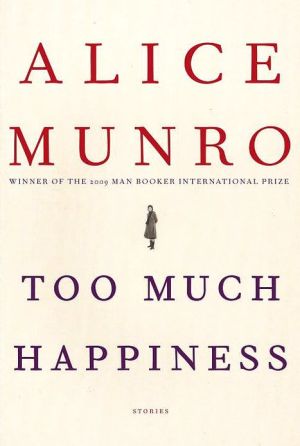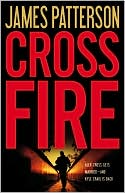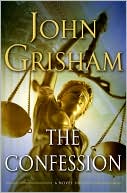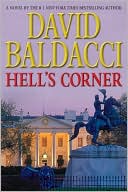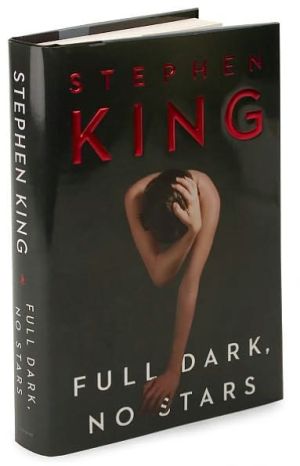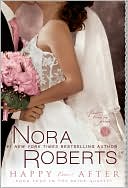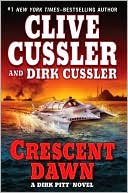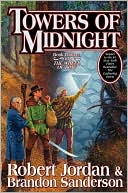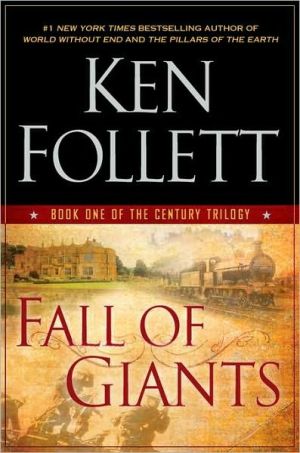Too Much Happiness
Ten superb new stories by one of our most beloved and admired writers—the winner of the 2009 Man Booker International Prize. \ In the first story a young wife and mother receives release from the unbearable pain of losing her three children from a most surprising source. In another, a young woman, in the aftermath of an unusual and humiliating seduction, reacts in a clever if less-than-admirable fashion. Other stories uncover the “deep-holes” in a marriage, the unsuspected cruelty of...
Search in google:
Ten superb new stories by one of our most beloved and admired writers—the winner of the 2009 Man Booker International Prize. With clarity and ease, Alice Munro once again renders complex, difficult events and emotions into stories about the unpredictable ways in which men and women accommodate and often transcend what happens in their lives. In the first story a young wife and mother, suffering from the unbearable pain of losing her three children, gains solace from a most surprising source. In another, a young woman, in the aftermath of an unusual and humiliating seduction, reacts in a clever if less-than-admirable fashion. Other tales uncover the “deep-holes” in a marriage, the unsuspected cruelty of children, and, in the long title story, the yearnings of a nineteenth-century female mathematician.The Barnes & Noble ReviewThe novelist Benjamin Cheever once brilliantly summed up New Yorker fiction as the kind of story where nothing much happens, but you feel a little sad about it anyway. Alice Munro's wonderful short stories (12 volumes of them so far), many of them originally published in The New Yorker, can mostly be said to fall into this category. But in old age she seems to be moving in a new direction, for things do happen in the ten tales that make up Too Much Happiness: lots of things, sometimes violent things. The tone is set in the very first story, "Dimensions," a disturbing look into the mind of a young woman to whom unspeakable damage has been done.
Too Much Happiness\ \ Many persons who have not studied mathematics confuse it with arithmetic and consider it a dry and arid science.\ Actually, however, this science requires great fantasy.\ —Sophia Kovalevsky\ i\ On the first day of January, in the year 1891, a small woman and a large man are walking in the Old Cemetery, in Genoa. Both of them are around forty years old. The woman has a childishly large head, with a thicket of dark curls, and her expression is eager, faintly pleading. Her face has begun to look worn. The man is immense. He weighs 285 pounds, distributed over a large frame, and being Russian, he is often referred to as a bear, also as a Cossack. At present he is crouching over tombstones and writing in his notebook, collecting inscriptions and puzzling over abbreviations not immediately clear to him, though he speaks Russian, French, English, Italian and has an understanding of classical and medieval Latin. His knowledge is as expansive as his physique, and though his speciality is governmental law, he is capable of lecturing on the growth of contemporary political institutions in America, the peculiarities of society in Russia and the West, and the laws and practices of ancient empires. But he is not a pedant. He is witty and popular, at ease on various levels, and able to live a most comfortable life, due to his properties near Kharkov. He has, however, been forbidden to hold an academic post in Russia, because of being a Liberal.\ His name suits him. Maksim. Maksim Maksimovich Kovalevsky.\ The woman with him is also a Kovalevsky. She was married to a distant cousin of his, but is now a widow.\ She speaks to him teasingly.\ “You know that one of us will die,” she says. “One of us will die this year.”\ Only half listening, he asks her, Why is that?\ “Because we have gone walking in a graveyard on the first day of the New Year.”\ “Indeed.”\ “There are still a few things you don’t know,” she says in her pert but anxious way. “I knew that before I was eight years old.”\ “Girls spend more time with kitchen maids and boys in the\ stables—I suppose that is why.”\ “Boys in the stables do not hear about death?”\ “Not so much. Concentration is on other things.”\ There is snow that day but it is soft. They leave melted, black footprints where they’ve walked.\ She met him for the first time in 1888. He had come to Stockholm to advise on the foundation of a school of social sciences. Their shared nationality, going so far as a shared family name, would have thrown them together even if there was no particular attraction. She would have had a responsibility to entertain and generally take care of a fellow Liberal, unwelcome at home.\ But that turned out to be no duty at all. They flew at each other as if they had indeed been long-lost relatives. A torrent of jokes and questions followed, an immediate understanding, a rich gabble of Russian, as if the languages of Western Europe had been flimsy formal cages in which they had been too long confined, or paltry substitutes for true human speech. Their behavior, as well, soon overflowed the proprieties of Stockholm.\ He stayed late at her apartment. She went alone to lunch with him at his hotel. When he hurt his leg in a mishap on the ice, she helped him with the soaking and dressing and, what was more, she told people about it. She was so sure of herself then, and especially sure of him. She wrote a description of him to a friend, borrowing from De Musset.\ He is very joyful, and at the same time very gloomy—\ Disagreeable neighbor, excellent comrade—\ Extremely light-minded, and yet very affected—\ Indignantly naïve, nevertheless very blasé—\ Terribly sincere, and at the same time very sly.\ And at the end she wrote, “A real Russian, he is, into the bargain.”\ Fat Maksim, she called him then.\ “I have never been so tempted to write romances, as when with Fat Maksim.”\ And “He takes up too much room, on the divan and in one’s mind. It is simply impossible for me, in his presence, to think of anything but him.”\ This was at the very time when she should have been working day and night, preparing her submission for the Bordin Prize. “I am neglecting not only my Functions but my Elliptic Integrals and my Rigid Body,” she joked to her fellow mathematician, Mittag-Leffler, who persuaded Maksim that it was time to go and deliver lectures in Uppsala for a while. She tore herself from thoughts of him, from daydreams, back to the movement of rigid bodies and the solution of the so-called mermaid problem by the use of theta functions with two independent variables. She worked desperately but happily, because he was still in the back of her mind. When he returned she was worn out but triumphant. Two triumphs—her paper ready for its last polishing and anonymous submission; her lover growling but cheerful, eagerly returned from his banishment and giving every indication, as she thought, that he intended to make her the woman of his life.\ The Bordin Prize was what spoiled them. So Sophia believed. She herself was taken in by it at first, dazzled by all the chandeliers and champagne. The compliments quite dizzying, the marvelling and the hand kissing spread thick on top of certain inconvenient but immutable facts. The fact that they would never grant her a job worthy of her gift, that she would be lucky indeed to find herself teaching in a provincial girls’ high school. While she was basking Maksim decamped. Never a word about the real reason, of course—just the papers he had to write, his need for the peace and quiet of Beaulieu.\ He had felt himself ignored. A man who was not used to being ignored, who had probably never been in any salon, at any reception, since he was a grown man, where that had been the case. And it wasn’t so much the case in Paris either. It wasn’t that he was invisible there, in Sonya’s limelight, as that he was the usual. A man of solid worth and negotiable reputation, with a certain bulk of frame and intellect, together with a lightness of wit, an adroit masculine charm. While she was an utter novelty,\ a delightful freak, the woman of mathematical gifts and female timidity, quite charming, yet with a mind most unconventionally furnished, under her curls.\ He wrote his cold and sulky apologies from Beaulieu, refusing her offer to visit once her flurry was over. He had a lady staying with him, he said, whom he could not possibly present to her. This lady was in distress and needed his attention at the moment. Sonya should make her way back to Sweden, he said; she should be happy where her friends were waiting for her. Her students would have need of her and so would her little daughter. (A jab there, a suggestion familiar to her, of faulty motherhood?)\ And at the end of his letter one terrible sentence.\ “If I loved you I would have written differently.”\ The end of everything. Back from Paris with her prize and her freaky glittery fame, back to her friends who suddenly meant no more than a snap of her fingers to her. Back to the students who meant something more, but only when she stood before them transformed into her mathematical self, which was oddly still accessible. And back to her supposedly neglected but devastatingly merry little Fufu.\ Everything in Stockholm reminded her.\ She sat in the same room, with the furniture brought at such foolish expense across the Baltic Sea. The same divan in front of her that had recently, gallantly, supported his bulk. And hers in addition when he skillfully gathered her into his arms. In spite of his size he was never clumsy in lovemaking.\ This same red damask, on which distinguished and undistinguished guests had sat in her old lost home. Maybe Fyodor Dostoyevsky had sat there in his lamentable nervous state, dazzled by Sophia’s sister Aniuta. And certainly Sophia herself as her mother’s unsatisfactory child, displeasing as usual.\ The same old cabinet brought also from her home at Pali - bino, with the portraits of her grandparents set into it, painted on porcelain. The Shubert grandparents. No comfort there. He in uniform, she in a ball gown, displaying absurd self-satisfaction.\ They had got what they wanted, Sophia supposed, and had only contempt for those not so conniving or so lucky.\ “Did you know I’m part German?” she had said to Maksim.\ “Of course. How else could you be such a prodigy of industry? And have your head filled with mythical numbers?”\ If I loved you.\ Fufu brought her jam on a plate, asked her to play a child’s card game.\ “Leave me alone. Can’t you leave me alone?”\ Later she wiped the tears out of her eyes and begged the child’s pardon.
Dimensions Fiction Wenlock Edge Deep-Holes Free Radicals Face Some Women Child’s Play Wood Too Much HappinessAcknowledgments
\ From the Publisher“Filled with subtle and far-reaching thematic reverberations. . . . [Munro has] an empathy so pitch-perfect. . . . You [are] drawn deftly into another world.” —The New York Times Book Review\ "Profound and beautiful.” —Francine Prose, O, The Oprah Magazine\ “Alice Munro has done it again. . . . [She] keeps getting better. . . . Her brush strokes are fine, her vision encompasses humanity from its most generous to its most corrupt, and the effect is nothing short of masterful.” —The San Francisco Chronicle\ “Richly detailed and dense with psychological observation. . . . Munro exhibit[s] a remarkable gift for transforming the seemingly artless into art . . . [She] concentrate[s] upon provincial, even backcountry lives, in tales of domestic tragicomedy that seem to open up, as if by magic, into wider, deeper, vaster dimensions.” —Joyce Carol Oates, New York Review of Books\ \ “A perfect 10. . . . With this collection of surprising short stories, Munro once again displays the fertility of her imagination and her craftsmanship as a writer.” —USA Today\ \ “Masterly. . . . [A] remarkable new book.” —The Los Angeles Times\ \ “Daring and unpredictable. . . . Reading Munro is an intensely personal experience. Her focus is so clear and her style so precise. . . . Each [story is] dramatically and subtly different.” —The Miami Herald\ \ “A brand-new collection of short stories from Alice Munro—winner of a Man Booker Prize—is always cause for celebration, and Too Much Happiness doesn’t disappoint. It dazzles. The 10 spare, lovely tales are . . . brimming with emotion and memorable characters. . . . Munro’s are stories that linger long after you turn the last page.” —Entertainment Weekly, Grade A\ \ “Finely, even ingeniously, crafted. . . . Deliver[ed] with instinctive acuity.” —The Seattle Times\ \ “Rich. . . . Truthful, in the deepest sense of the word. . . . Reading an Alice Munro short story is like sinking into a reverie. She expertly captures the shadings and byways of associative thought. . . . [Munro] will surely be remembered as the writer who took the short story to the depth of what short fiction can plumb.” —The Kansas City Star, Best 100 Books of 2009\ \ “Rich and satisfying. . . . A commanding collection and one of her strongest. . . . Short fiction of this caliber should be on everyone’s reading list. Munro’s stories are accessible; she simply writes about life. . . . Honest, intuitive storytelling that gives the short story a good name.” —Chicago Sun-Times\ \ “There's never too much happiness in a Munro collection, just sentence after sentence to die for.” —Louisville Courier-Journal\ \ “[Munro is] universally acknowledged as one of the greatest short-story writers of our time. . . . [Her] work [is] at such a high level. . . . These stories are extraordinary, ample with the shrewdness and empathy that we have come to take for granted in Munro. . . . Her most distinguishing characteristic as a writer is . . . her extraordinary intimacy with her characters.” —The New Republic\ \ “Coherent and compelling. . . . Munro manages to turn the sentimental into the existential.” —The Philadelphia Inquirer\ \ “Stunning. . . . An unexpected gift. . . . Here we have 10 perfectly honed pieces, each a study of the human psyche in hard-to-imagine circumstances that Munro presents, seemingly effortlessly, in an economy of words and sentences.” —The Buffalo News\ \ “As always in her distinctive stories, Alice Murno’s style is vivid, her attention tireless, her curiosity omnivorous, and her sentences drawn from the freshest of springs.” —The Washington Post\ \ “If there’s a better short story writer working today than Alice Munro, I haven’t read her. In story after story, Munro manages to compress whole lives and emotional arcs into 20 or so shapely pages, long enough to engage us in their world but short enough to absorb in a single sitting or commute. Her prose is spare without feeling rushed or cryptic, at once lucid and subtle.” —Heller McAlpin, The Christian Science Monitor\ \ “I sit still for Alice Munro’s expository passages every time. She lays down such seemingly ordinary but useful sentences, one after another after another. . . . I stay to marvel. . . . Is there anyone writing short fiction today in English who has more authority?” —Alan Cheuse, NPR\ \ “Beautiful. . . . With great insights into human nature.” —The Grand Rapids Press\ \ “All varying degrees of excellent. . . . A work of supreme observational power, employing Munro’s deft, controlled sentences in the service of essaying characters who don’t realize they’re living their lives on the brink until revelation rushes over them.” —The A.V. Club\ \ “Another piercing collection. . . . It’s a testament to Munro’s mastery that she can make the lurid sing with nuance and explicability. . . . Her ear for dialogue is unerring. . . . Whatever format you favor in storytelling, go ahead and enter Too Much Happiness. It will carry you safely through the gates, and no doubt send you looking for other castles constructed by the stunning Alice Munro.” —The Plain Dealer\ \ “Shows Munro’s skills at their best.” —The Pittsburgh Post-Gazette\ \ “Outstanding. . . . [Munro] writes concise descriptions that bring characters and settings to life. . . . [and] throws in observations that serve as nuggets of wisdom.” —The Wichita Eagle\ \ “Consistently engrossing . . . Thoughtfully wrought. . . . [The] material is given piercing clarity by the resolute simplicity and restraint of Ms. Munro’s prose. . . . She can raise hackles on the back of your neck with a precisely phrased unadorned verb or noun. . . . The Munro magic is showcased brilliantly.” —The Washington Times\ \ “The unanticipated is in full force here, fresh and exciting. Munro seems to say that mundane lives constructed of order and routine are still governed by random acts. She hides human complexity in the ordinary until it surfaces in unimagined ways.” —The Providence Journal\ \ “As poignant [and] chilling as they come. . . . Why [Munro] is rightly regarded as a master of the form is her deliberate, suspenseful layering of characters and circumstances. . . . Every story in Too Much Happiness is, in a sense, a life story. . . . It’s as if the characters are reading along with these mini life lessons, emerging with enviable wisdom and perspective.” —The L Magazine\ \ \ “Munro is the master of the inevitable surprise. . . . [She] has an uncanny ability to take us inside a character’s mind.” —The St. Petersburg Times\ \ “Few writers can match the clarity and immediacy of Munro’s descriptions whether she is portraying a subsiding marriage, a treacherous childhood, or the erotic and intellectual sojourn of a 19th century Russian mathematician.” — The Boston Globe\ \ “These ten short stories cement the capstone on what fellow Canadian Margaret Atwood has described as Munro’s ascent to ‘international literary sainthood’. . . . The title story . . . is, in length and scope, Munro’s most ambitious story to date. . . . May this house of hers, and its autumnal gardens, continue to be harvested to glorious effect.” —The Oregonian\ \ “Intrigue and manipulation fill the vividly drawn stories in this collection.” —The Sacramento Bee\ \ “More occurs in Munro’s short stories than in most novels. . . . The pieces here . . . are thrilling permutations of her recurring themes: love, regret, the re-framing of one’s own personal narrative over time.” —The New York Post\ \ “More than virtually anyone else’s, Alice Munro’s stories unfold in surprising ways that nonetheless seem perfectly right. They are marvels of unhurried compression in which precision looks casual, in which everything is clearly in its place, though no one else might think to put it exactly thus.” —Minneapolis Star Tribune\ From the Trade Paperback edition.\ \ \ \ \ \ Michiko Kakutani"Too Much Happiness," the title story of Alice Munro's latest collection, is a brilliant distillation of her Chekhovian art. Though it's based on the life of the 19th-century Russian mathematician Sophia Kovalevsky, and takes place in Europe rather than the author's native Canada, the tale showcases all of Ms. Munro's gifts as a master of the short story form, while recapitulating many of the themes that have animated her fiction over four decades: the complicated arithmetic of familial relationships, the freedoms and constraints imposed by marriage, the competing claims of love and independence that women must balance in trying to forge identities of their own.\ —The New York Times\ \ \ Leah Hager CohenToo Much Happiness, represents at once a return to [Munro's] habitual form and a furthering of her exploratory sensibilities.The collection's 10 stories take on some sensational subjects. In fact, a quick tally yields all the elements of pulp fiction: violence, adultery, extreme cruelty, duplicity, theft, suicide, murder. But while in pulp fiction the emotional climax coincides with the height of external drama, a Munro story works according to a different scheme. Here the nominally momentous event is little more than an anteroom to an echo chamber filled with subtle and far-reaching thematic reverberations.\ —The New York Times Book Review\ \ \ \ \ Publishers WeeklyMunro's latest collection is satisfyingly true to form and demonstrates why she continues to garner laurels (such as this year's Man Booker International Prize). Through carefully crafted situations, Munro breathes arresting life into her characters, their relationships and their traumas. In “Wenlock Edge,” a college student in London, Ontario, acquires a curious roommate in Nina, who tricks the narrator into a revealing dinner date with Nina's paramour, the significantly older Mr. Purvis. “Child's Play,” a dark story about children's capacity for cruelty and the longevity of their secrets, introduces two summer camp friends, Marlene and Charlene, who form a pact against the slightly disturbing Verna, whose family used to share Marlene's duplex. The title, and final, story, the collection's longest and most ambitious, takes the reader to 19th-century Europe to meet Sophia Kovalevski, a talented mathematician and novelist who grapples with the politics of the age and the consequences of success. While this story lacks some of the effortlessness found in Munro's finest work, the collection delivers what she's renowned for: poignancy, flesh and blood characters and a style nothing short of elegant. (Nov.)\ \ \ \ \ Library JournalIn this riveting new collection, Munro probes loss, loneliness, regret, separation, and death in her typically brilliant fashion, portraying ordinary men and women seeking to find the clues that will help them toward wholeness or, at the very least, an acceptance of a broken life. In "Deep-Holes," a defeated mother who has finally tracked down a prodigal son realizes that in the end we're "marooned on islands of our own choosing, clear sighted, content." In "Dimensions," a Medea story in reverse, Doree tries to move beyond the loss of her children by visiting their father and murderer, Lloyd, in a mental hospital. The visit brings her no peace, but a jarring event on her bus trip back home brings an unexpected resolution. In the title story, based on the life of Russian mathematician and novelist Sophie Kovalevsky, the widow Sophie comes to realize the precarious and fleeting nature of happiness even as she embraces the fullness of life. VERDICT Much like her fellow Canadian writer David Adams Richards, Munro captures the intimate lives of her characters as they seek solace amid disruption. Fans of the prize-winning Munro will eagerly devour her latest. [See Prepub Alert, LJ 7/09.]—Henry L. Carrigan Jr., Evanston, IL\\\ \ \ \ \ Kirkus ReviewsEvery story collection from Canada's Alice Munro receives such critical plaudits that it's tempting for reviewers to recycle superlatives and readers to take her for granted. But there is no such thing as just "another" Munro release. Each time, she extends her work in a manner that redefines it. Her latest doesn't represent as radical a repositioning as its predecessor, The View from Castle Rock (2006), which Munro introduced as a story cycle different than anything she had published before, based on generations of her family's historical record as reflected in journals, letters and the writer's research. But most of the stories in Too Much Happiness-and most of them are shorter than usual for Munro-also concern the relationship between life and storytelling, how the construction of narrative reveals deeper truths or uncomfortable lies. In one of the stories, simply titled "Fiction," the protagonist finds her own life recast in the stories of her divorced husband's stepdaughter. "How Are We to Live is the book's title," she relates. "A collection of short stories, not a novel. This in itself is a disappointment. It seems to diminish the book's authority, making the author seem like somebody who is hanging on the gates of Literature, rather than safely settled inside."Ha! No modern writer this side of Raymond Carver has opened that gate wider for the story's literary regard, though Munro's fiction has more of a novelistic scope and scale than the elliptical, tightly focused work of Carver (and so many other short-story writers). In less than 30 pages, "Fiction" combines the chronological expanse of a novel with an artful compression that merges the events as remembered by the protagonistand the fiction it has inspired. Even more powerfully, "Child's Play" concerns the stories we concoct in order to live with ourselves. The question posed to the girlhood protagonist-"How can you blame a person for the way she was born?"-carries greater resonance as she achieves the maturity of the narrative perspective, climaxing in a stunning confessional about childhood complicity and guilt. Title aside, there is far more death than happiness in these stories-the body count, though not the violence, rivals a Cormac McCarthy novel. Yet the title story, the longest and last, arrives at an epiphany that combines ecstasy and mortality in a manner that puts all that has come before-in this volume and throughout Munro's career-in blindingly fresh light. As Munro explains in her acknowledgements, it's a story based on the final days of Sophia Kovalevski, a brilliant Russian mathematician who also wrote fiction that enraged her father. "Now you sell your stories, how soon before you will sell yourself?" he sputters after a magazine edited by Dostoyevsky publishes her. Here, Munro herself reads like a Russian master. It's hard to imagine that anyone could write stories richer than these. Until the next Munro collection. First printing of 125,000\ \ \ \ \ The Barnes & Noble ReviewThe novelist Benjamin Cheever once brilliantly summed up New Yorker fiction as the kind of story where nothing much happens, but you feel a little sad about it anyway. Alice Munro's wonderful short stories (12 volumes of them so far), many of them originally published in The New Yorker, can mostly be said to fall into this category. But in old age she seems to be moving in a new direction, for things do happen in the ten tales that make up Too Much Happiness: lots of things, sometimes violent things. The tone is set in the very first story, "Dimensions," a disturbing look into the mind of a young woman to whom unspeakable damage has been done.\ We first encounter Doree as she rides the bus to prison to visit her husband. She is a motel chambermaid: "She liked the work -- it occupied her thoughts to a certain extent and tired her our so that she could sleep at night." Why does she wish to have her thoughts occupied? What images does she wish to banish from them? Little by little, Munro reveals the chilling events that have led up to this moment: her meeting with Lloyd, an aging hippie, when she was only 16; his psychological domination of her; his growing paranoia; at last, unthinkably, his murder of their three children.\ After a lifetime spent honing her natural narrative gifts, Munro is able to spin this out in mesmeric style. But the masterstroke is the way she gets across Doree's current state of mind, the thought processes that make her continue to visit Lloyd against the advice of well-trained therapists and social workers, and to believe that he is the only person, in the end, who can fully share her pain. As always, Munro demonstrates an extraordinary ability to inhabit the minds of characters who bear little surface resemblance to her, and she is also far more at ease than most contemporary writers with a wide range of social classes.\ Recognizing this quality in her work, Munro has suggested that a life spent in the small towns of southern Ontario has exposed her to a wider range of human types than she might have encountered in an urban existence, where people are more stratified both socially and professionally. This seems a plausible theory and goes far toward answering the ever-interesting question of why it is that quintessentially urban writers (Joyce, Dickens, Balzac) present a more complex but not necessarily richer vision of human life than rural or "regional" authors (Faulkner, Hardy, Flaubert). Munro's protagonists come from both ends of the social spectrum, and they are of every age: in fact in a couple of these tales, "Fiction" and "Free Radicals," the author kaleidoscopes different periods of her characters' lives together in a long view one seldom sees in short fiction. And in "Some Women," a close-to-perfect piece of work, she demonstrates her facility with the child's-eye view of adult life, a technique originally made famous by Henry James's What Maisie Knew.\ The now-elderly narrator of "Some Women" looks back on the late 1940s, when at the age of13 she got a summer job fetching and carrying for a cranky old lady, Mrs. Crozier. Mrs. Crozier's son is dying of leukemia in an upstairs bedroom; his wife, Sylvia, has a job teaching summer school two afternoons a week, which stigmatizes her in the eyes of the town: "People were just down on her because she had got an education," the narrator remembers. "Another thing they said was that she could have stayed home and looked after him now, as promised in the marriage ceremony, instead of going out to teach."\ Need any more be said about the narrowness and meanness of this community? Old Mrs. Crozier doesn't like her intellectual daughter-in-law any more than the rest of the town does, and when a sexy, narcissistic masseuse named Roxanne begins coming to the house to work on the old lady's aches and pains, we see, through the narrator's half-comprehending gaze, a sinister alliance grow between the two women, culminating in their ungodly contest against Sylvia, the wedded wife, for an "almost obliterated prize, Mr. Crozier." "The carnality at death's door -- or the true love, for that matter -- were things I had to shake off like shivers down my spine."\ Munro's characterization of Roxanne, deftly accomplished through a minimum of dialogue, gesture, and allusion, is immediately recognizable. "I began to understand that there were certain talkers -- certain girls -- whom people liked to listen to, not because of what they, the girls, had to say, but because of the delight they took in saying it. A delight in themselves, a shine on their faces, a conviction that whatever they were telling about was remarkable and that they themselves could not help but give pleasure. There might be other people -- people like me -- who didn't concede this, but that was their loss. And people like me would never be the audience these girls were after, anyway." In this case the crude character is observed from the outside; in another marvelous story, "Child's Play," the narrator herself diagnoses the crudity -- the evil, as it turns out -- in herself.\ The title story of the collection is an experiment, at least in Munrovian terms; though it doesn't quite come off it is of interest, as of course is almost anything this writer produces. Fifty-seven pages long, "Too Much Happiness" is Munro's imagining of the life of an actual 19th-century Russian woman, Sophia Kovalevsky (1850-91), who first came to Munro's attention in the Encyclopedia Britannica. "The combination of novelist and mathematician immediately caught my interest, and I began to read everything about her I could find. One book enthralled me beyond all others," she writes: Little Sparrow: A Portrait of Sophia Kovalevsky, by Don H. Kennedy. Kovalevsky's life story is indeed fascinating: she succeeded in becoming a world-class mathematician at a time when there were no academic posts for women in Russia or almost anywhere else in Europe (only Swedish universities opened their doors to her), and she lived through dramatic historical events, including the 1871 Paris Commune. "Too Much Happiness" makes pleasant enough reading, but as with so many fictionalized versions of real people and events, one can't help thinking that the actual biography -- in this case Little Sparrow -- probably has more to offer.\ So Alice Munro, despite the hints she dropped that her previous fiction collection (The View From Castle Rock) would be her last, is still going strong, and still growing and developing. It will be interesting to see what surprises she might have in store for the future. --Brooke Allen\ Brooke Allen is the author of Twentieth-Century Attitudes; Artistic License; and Moral Minority. She is a contributor to The New York Times Book Review, The New Criterion, The New Leader, The Hudson Review, and The Nation, among others. She was named a finalist for the 2007 Nona Balakian Citation for Excellence in Reviewing from the National Book Critics Circle.\ \ \
